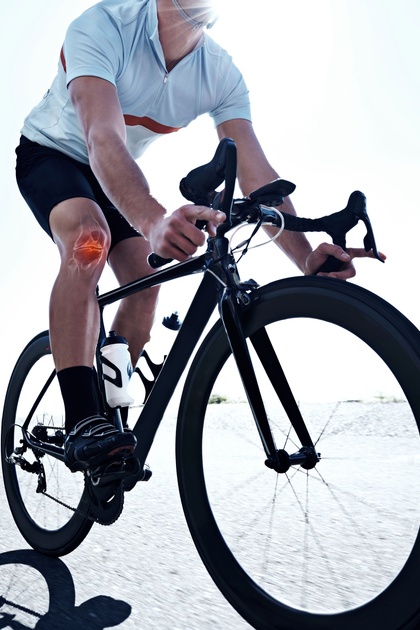
Loading the knee properly - with each pedal stroke
Foto:iStock.com/pixdeluxe
With the right posture and the correct leg axis, you can stop overloading the knee.
This article is brought to you by Medical Running
Oftentimes, we have cycled and pedalled thousands of kilometres on our bikes since childhood without ever thinking about the pedalling technique. Not to mention doing technique training on the bike.
We’ve all experienced it: knee pain at the end of a long bike trip. Unfortunately, knee pain when cycling is extremely common. It is both bothersome and tedious, depending on the situation. The pressure on the pedals is never as intense as that when jogging. Longer trips, however, can easily add up to more than 10,000 revolutions. If you have an awkward sitting position or the knees are badly loaded during each revolution, pain will quickly occur. The incorrect loading of the leg axis is increased by the fixed foot position in the click binding. Each rotation then equates to a small tissue-damaging stimulus, which cumulatively leads to long-lasting knee pain.
Whereas knee pain can go away quickly, the next trip comes along and the whole thing starts all over again. By now the knee is already aggravated. Every painful rotation inevitably leads to movement compensation. The load on the leg axis becomes even worse and your performance suffers accordingly.
Like the pistons of a two-cylinder engine
The knee joint is a typical hinge joint and must be used as such. Bending and stretching are the necessary main movements. Rotating or laterally bending the knee joint are undesirable when on the bike. The more the pedalling movement deviates from the straight axis, the higher the load on the knee joint. As a result, the lateral ligamentous apparatus becomes overloaded. This incorrect loading can also lead to damage in the knee joint itself.
The knee must move up and down in a straight line with each pedal stroke. Any outward or inward deviations need to be eliminated. It is best to control your pedal stroke indoors, either on a roller, ergometer or spinning bike. You will thus have enough time to monitor several revolutions and correct them if necessary.
The ankle can also cause knee joint overload. When pushing down, the tip of the foot must be pressed down slightly. The calf muscles do the work here. If there is too little downward pressure, the tip of the foot remains up and the knee joint is forced to extend. This careless pedal stroke aggravates the knee joint. Once at the bottom of the stroke, the foot lifter needs to become active, and the tip of the foot must be pulled up again. The foot pushes downwards and pulls upwards. The even distribution of pressure on the forefoot is important. The balls of the big and small toes should have the same amount of pressure. With this technique, the pedal stroke will be smoother and there will be no knee pain.
This may be of interest for you too


